Stepping into Everglades National Park feels like entering another world. The park’s 1.5 million acres offer incredibly diverse ecosystems. You can spot alligators sunning on banks, manatees gliding through waterways, and rare Florida panthers if you’re exceptionally lucky.
The Everglades isn’t just one place but several distinct sections – Gulf Coast, Shark Valley, Royal Palm, and Flamingo – each offering different experiences. During my visit, I found the boardwalk trails particularly accessible. Bobcat Boardwalk and Otter Cave Hammock let me get surprisingly close to wildlife while staying safe. The park’s mangrove forests and marshy grasslands create a one-of-a-kind environment that’s unlike anywhere else in the country.
For first-time visitors like I was last year, the key is getting out of your vehicle. The magic of the Everglades reveals itself when you paddle through quiet waterways, hike scenic trails, or join a ranger-led program. The entrance fee grants access for seven days, giving you plenty of time to explore multiple sections of this incredible national treasure at your own pace.

Preparing for Your Everglades Adventure
Planning a trip to the Everglades requires careful consideration of seasons, supplies, and safety precautions. The time of year you visit dramatically affects your experience, from wildlife sightings to comfort levels.
Best Times to Visit: Dry vs. Wet Season
The dry season (November through April) is hands-down the best time to visit the Everglades. I’ve found wildlife viewing is exceptional during these months as animals gather around remaining water sources. Temperatures hover between 70-80°F with lower humidity and fewer mosquitoes.
The wet season (May through October) brings daily afternoon thunderstorms and temperatures above 90°F. Wildlife disperses throughout the expanded wetlands, making sightings less frequent. Hurricane season peaks from August through October, so I recommend checking weather forecasts carefully if planning a summer visit.
Climate change has affected traditional seasons, with some dry seasons experiencing unusual rainfall patterns. I’ve noticed this firsthand during recent visits, so flexibility with your itinerary is key.
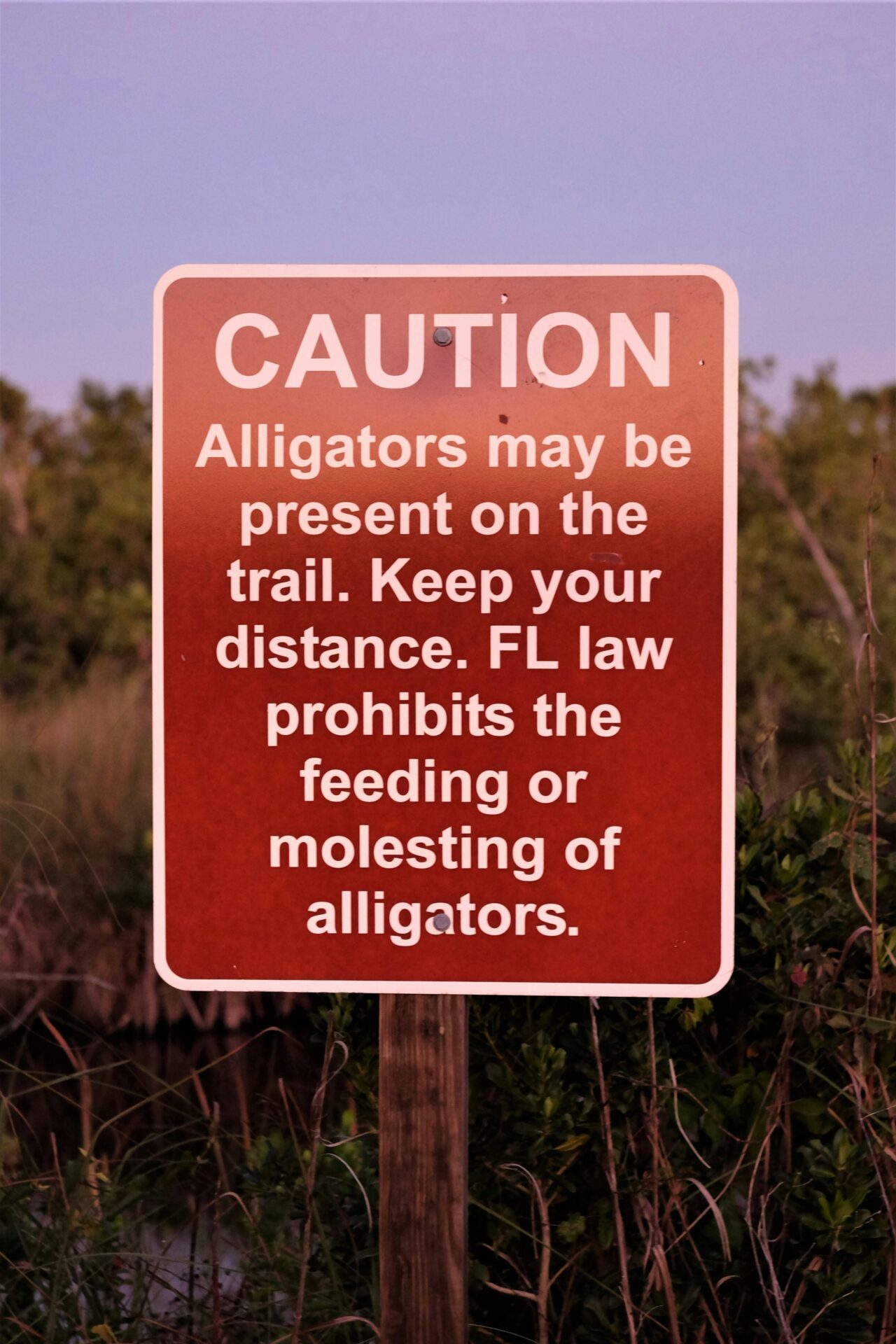
Trip Planning Essentials
Reserve accommodations early if visiting during peak season (December-April). Flamingo Campground and backcountry camping sites book up months in advance.
Park entrance fees are $30 per vehicle, valid for seven days. I recommend the America the Beautiful Pass ($80) if you plan to visit multiple national parks within a year.
Guided tours are worth the investment for first-time visitors. Consider these options:
- Ranger-led programs (free with admission)
- Boat tours from Gulf Coast and Flamingo areas ($40-60)
- Authorized airboat tours outside park boundaries ($30-75)
Cell service is spotty throughout the park. I always download offline maps before arrival and inform someone of my itinerary.
What to Pack: Mosquitoes, Sun, and Water Safety
Sun protection is non-negotiable. I bring:
- Broad-spectrum sunscreen (SPF 50+)
- Wide-brimmed hat
- UPF-rated long-sleeve shirts and pants
- Polarized sunglasses
For mosquitoes (especially in wet season):
- DEET or picaridin repellent (25-30% concentration)
- Permethrin-treated clothing
- Light-colored, loose-fitting attire
Water safety essentials:
- Refillable water bottles (minimum 1 gallon per person per day)
- Water purification tablets as backup
- Quick-dry clothing and extra socks
I always pack binoculars, a camera with zoom lens, and a small day pack. Sturdy, closed-toe water shoes are perfect for most trails. Drinking water is available at visitor centers, but limited elsewhere in the park, so I carry more than I think I’ll need.
Navigating the Everglades
Getting around Everglades National Park requires planning due to its vast size and diverse ecosystems. The park offers multiple entry points that lead to unique experiences with wildlife and scenic trails.
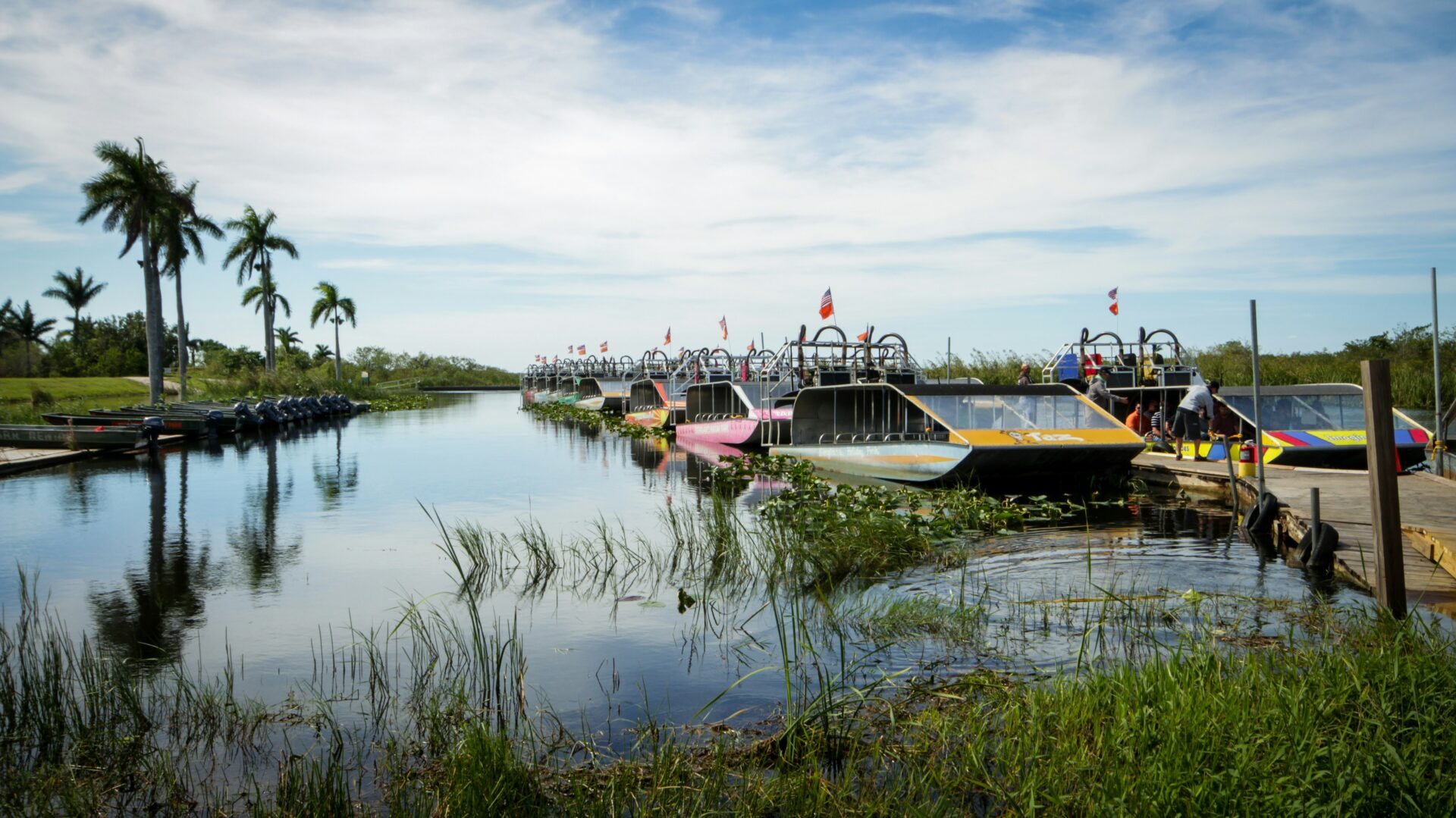
Visitor Centers: Gateways to the Park
I found the Ernest F. Coe Visitor Center near Homestead to be an excellent starting point. It offers informative exhibits about the park’s ecosystem and helpful rangers who can suggest trails based on your interests.
There are three main entry points to the Everglades:
- Homestead Entrance (Ernest F. Coe Visitor Center)
- Shark Valley Entrance along Tamiami Trail
- Gulf Coast Entrance near Everglades City
Each center provides different perspectives of this massive wetland. The Gulf Coast area showcases mangrove forests and is less crowded. Shark Valley offers panoramic views from its observation tower. I recommend checking the visitor center hours before your trip, as they change seasonally.
Wildlife Viewing Hotspots
The best wildlife viewing happens early morning or late afternoon. During my visit, I spotted alligators basking in the sun along Anhinga Trail and herons wading through shallow waters.
Top Wildlife Spots:
- Eco Pond near Flamingo (birds)
- Nine Mile Pond (alligators and turtles)
- Paurotis Pond (nesting wood storks and roseate spoonbills)
Bringing binoculars enhanced my experience tremendously. The park’s diverse ecosystem supports incredible biodiversity – from tiny tree frogs to majestic great blue herons.
Don’t rush through these areas. I spent 30 minutes at one spot and saw wildlife emerge that I would have missed otherwise.

Adventure on the Anhinga Trail and Shark Valley
The Anhinga Trail is a must-visit boardwalk that loops through sawgrass marsh. It’s the most accessible trail from Miami, just a short drive from the Ernest F. Coe Visitor Center.
Walking the trail, I came face-to-face with sunbathing alligators and nesting anhingas (water birds). The raised boardwalk keeps you safe while providing intimate wildlife encounters.
Shark Valley offers a different experience with its 15-mile paved loop. You can:
- Hike portions of the trail
- Rent bicycles at the visitor center
- Take the tram tour with a naturalist guide
The observation tower at Shark Valley’s midpoint provides stunning panoramic views of the River of Grass stretching to the horizon. During the dry season (winter months), wildlife concentrates around the remaining water sources, making for exceptional viewing opportunities.
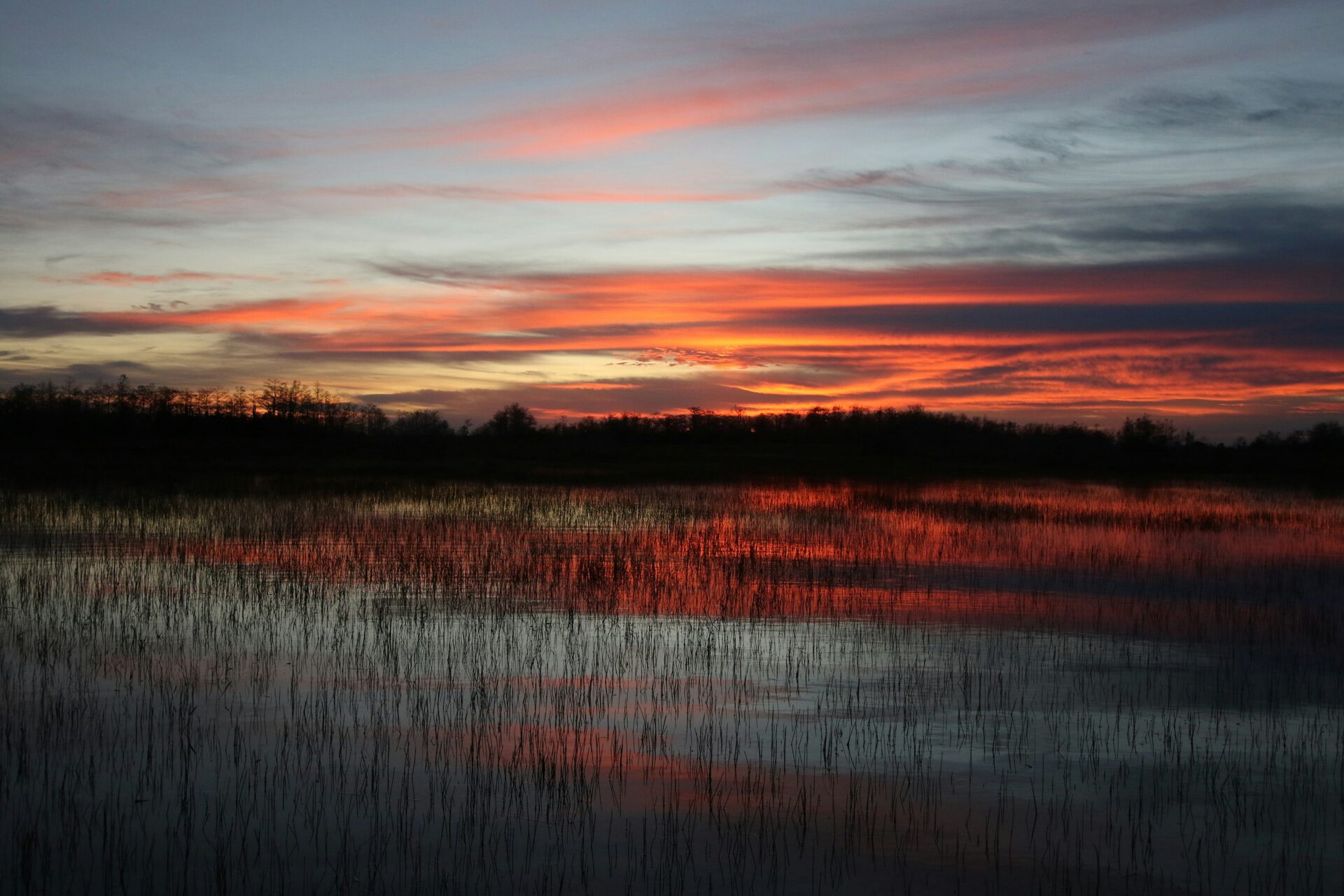
Encountering Everglades Wildlife
The Everglades is a wildlife paradise where visitors can observe amazing creatures in their natural habitat. During my visits, I’ve discovered that knowing where and when to look makes all the difference in spotting the park’s iconic residents.
All About Alligators and Crocodiles
Alligators are the stars of the Everglades, and I’ve found them sunning themselves along most waterways. They’re most active during cooler mornings and evenings. The Anhinga Trail offers almost guaranteed alligator sightings – I’ve counted over a dozen on a single visit!
Crocodiles are rarer, mainly found in the saltwater areas near Flamingo. Unlike alligators, they have pointed snouts and visible lower teeth.
For safety, I always maintain at least 15 feet of distance from these reptiles. They might look lazy, but they can move incredibly fast when motivated. Never feed them – it’s dangerous and illegal.
The best viewing spots I’ve discovered include:
- Anhinga Trail (alligators)
- Shark Valley (alligators)
- Eco Pond near Flamingo (crocodiles)
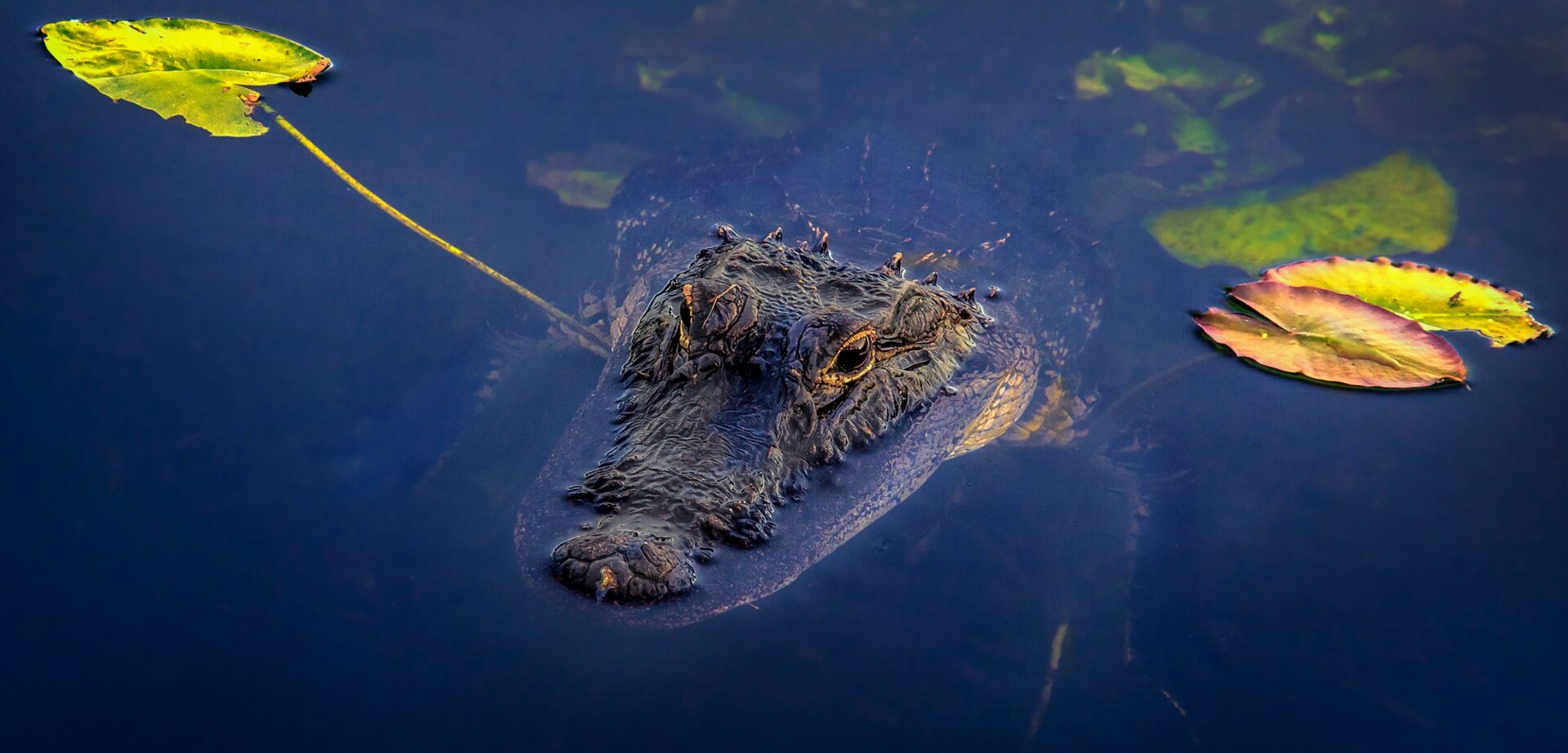
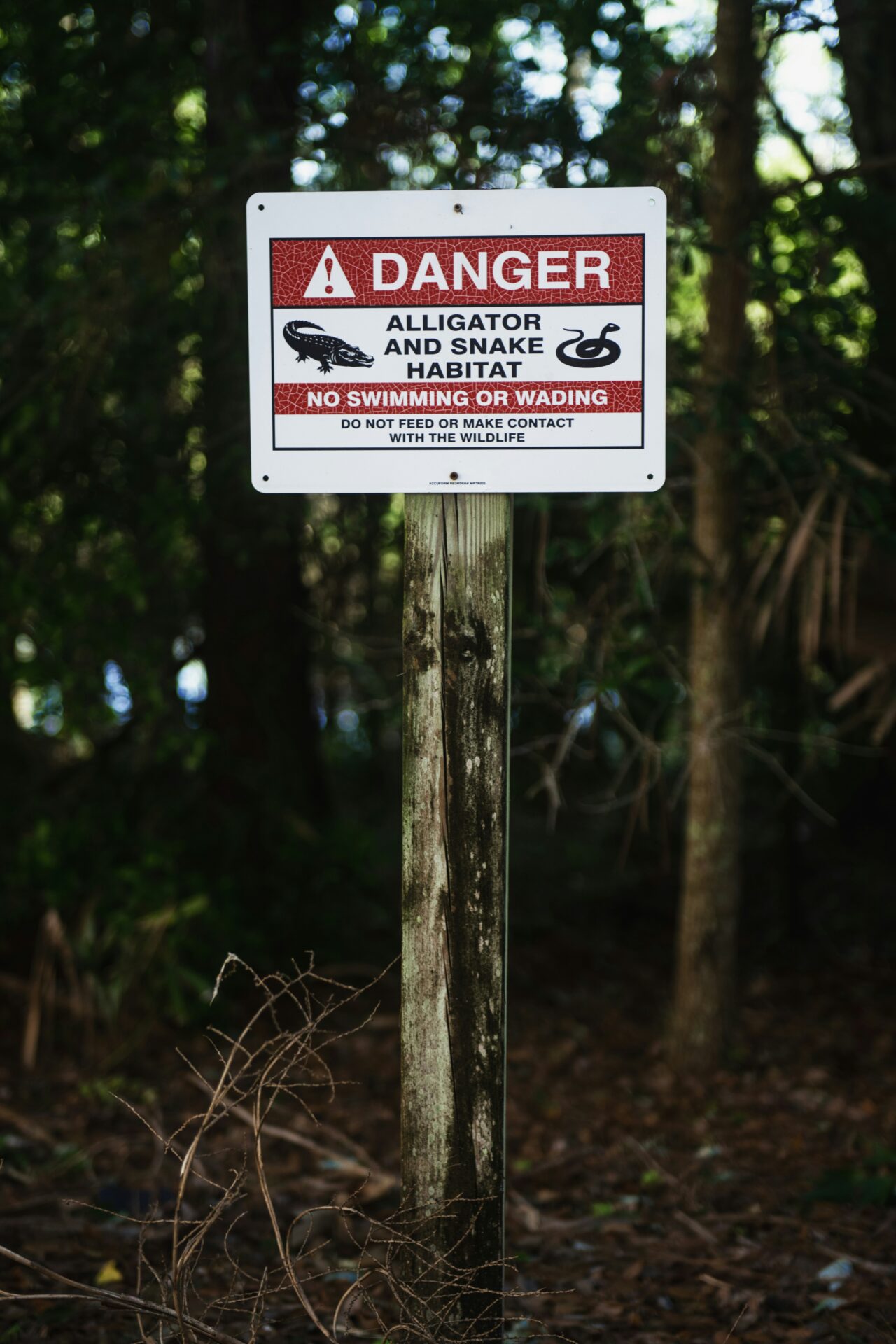
Spotting the Florida Panther and Other Mammals
The elusive Florida panther is the holy grail of Everglades wildlife watching. With fewer than 200 remaining, spotting one requires incredible luck. My ranger friends say dawn and dusk along remote trails offer the best chances.
Other mammals I’ve encountered include:
- White-tailed deer (common along Flamingo area trails)
- Marsh rabbits (abundant near freshwater areas)
- River otters (playful creatures seen along canoe trails)
- Raccoons (common but please don’t feed them!)
The Pinelands Trail has given me my best mammal sightings. I always scan tree lines carefully and move quietly. Binoculars are essential – I wouldn’t visit without them.
Many Everglades mammals are nocturnal, making ranger-led night programs an excellent option for wildlife enthusiasts.

The Bird Watcher’s Paradise: Wading Birds and More
The Everglades hosts over 350 bird species, making it a birder’s dream. My favorite time for bird watching is early morning when wading birds actively hunt in shallow waters.
Stunning wading birds I’ve photographed include:
- Great blue herons (standing majestically in shallow waters)
- Roseate spoonbills (with their distinctive pink plumage)
- Wood storks (endangered species with prehistoric appearances)
- Snowy egrets (pure white with distinctive yellow feet)
Pahayokee Overlook provides panoramic views of birds soaring over marshlands. For close-up encounters, I recommend the Mrazek Pond, where birds gather in impressive numbers during dry season (December-April).
Migratory species dramatically increase during winter months. I’ve spotted rare birds like the swallow-tailed kite during spring migration.
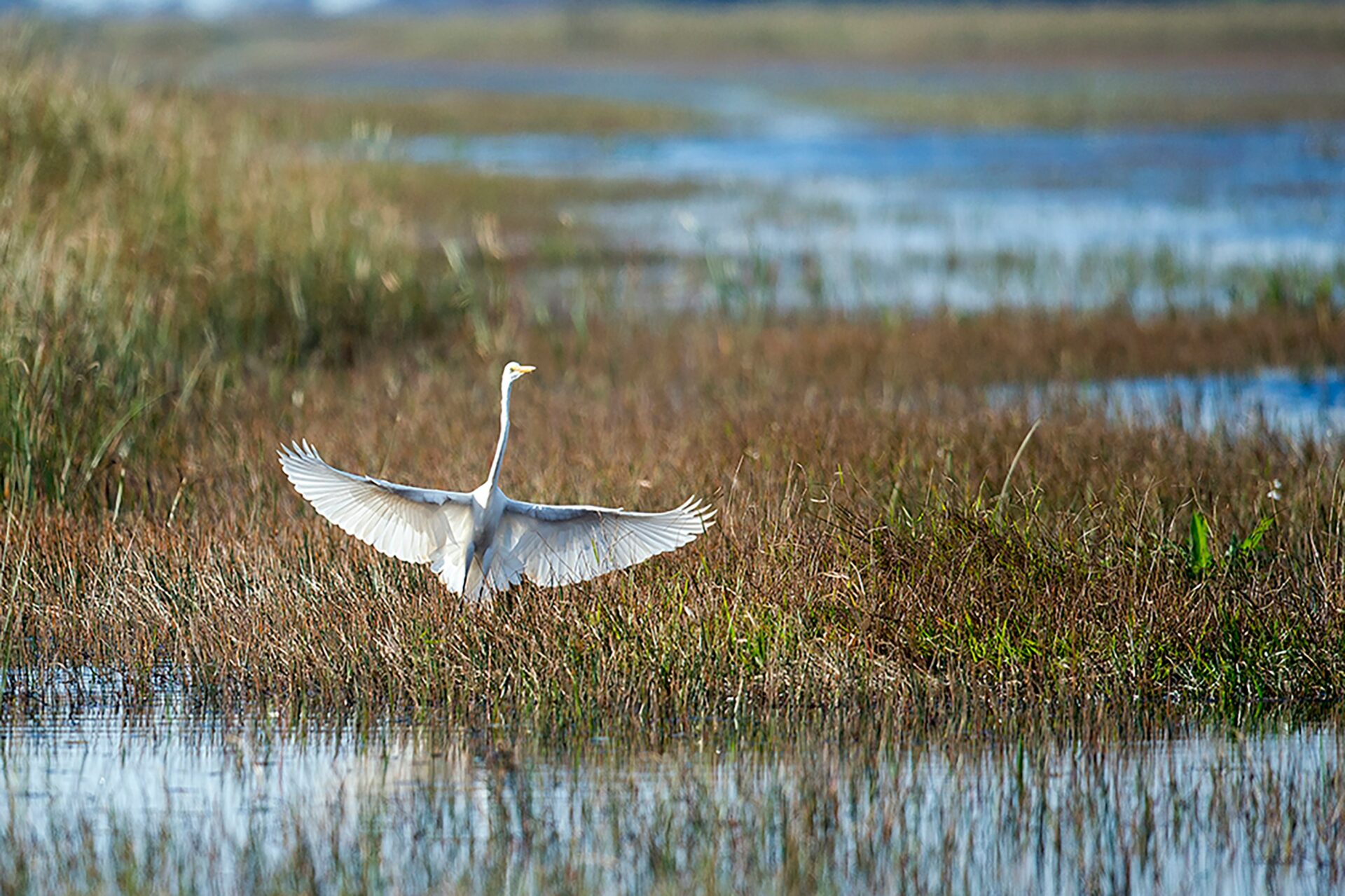
Immersive Activities in the Everglades
The Everglades offers a variety of ways to experience its unique ecosystem. From hiking through diverse landscapes to gliding across the water, there’s something for every nature enthusiast.
Hiking Trails for All Skill Levels
During my visits to the Everglades, I’ve discovered trails that cater to every ability. The Anhinga Trail is my top recommendation for beginners and wildlife enthusiasts. This 0.8-mile boardwalk winds through sawgrass marshes where alligators, turtles, and birds are often just feet away.
For a more secluded experience, I love the Gumbo Limbo Trail. This shaded path takes you through a tropical hardwood hammock with fascinating plant life.
More adventurous hikers should check out the Coastal Prairie Trail. I spent a wonderful morning hiking this 7.5-mile trail through open prairies to the shoreline.
The best time for hiking is during the dry season (November to April) when temperatures are cooler and mosquitoes are less prevalent.
Exploring by Water: Boat Tours and Kayaking
Exploring the Everglades by water is truly the most authentic way to experience this unique ecosystem. I’ve taken several guided boat tours from the Gulf Coast and Flamingo visitor centers that provided incredible wildlife viewing opportunities.
Airboat rides offer an exhilarating experience through the sawgrass marshes. The guides are incredibly knowledgeable about local wildlife and the ecosystem’s history.
For a quieter experience, I recommend kayaking. Paddling the Nine Mile Pond trail gave me close encounters with wildlife without disturbing their natural behaviors. The silence allowed me to spot birds I would have missed on a motorized tour.
Several outfitters in the park offer kayak rentals and guided tours. Book in advance during peak season (December-April) as these popular activities fill up quickly.

Fishing and Camping in the Everglades
Fishing in the Everglades has been one of my most rewarding experiences. Both freshwater and saltwater fishing opportunities abound. I’ve caught largemouth bass in the freshwater marshes and snook near the coastal areas.
A fishing license is required, and certain areas have specific regulations to protect endangered species. Check with park rangers for the most up-to-date information.
For the full immersion experience, I highly recommend camping. The Flamingo Campground offers amenities like restrooms and showers, while backcountry camping sites provide a more primitive experience.
My favorite campsite is Long Pine Key, surrounded by pine forests and close to several hiking trails. The star-gazing here is incredible due to minimal light pollution.
Remember to book campsites well in advance through the National Park Service website, especially during the busy winter months.
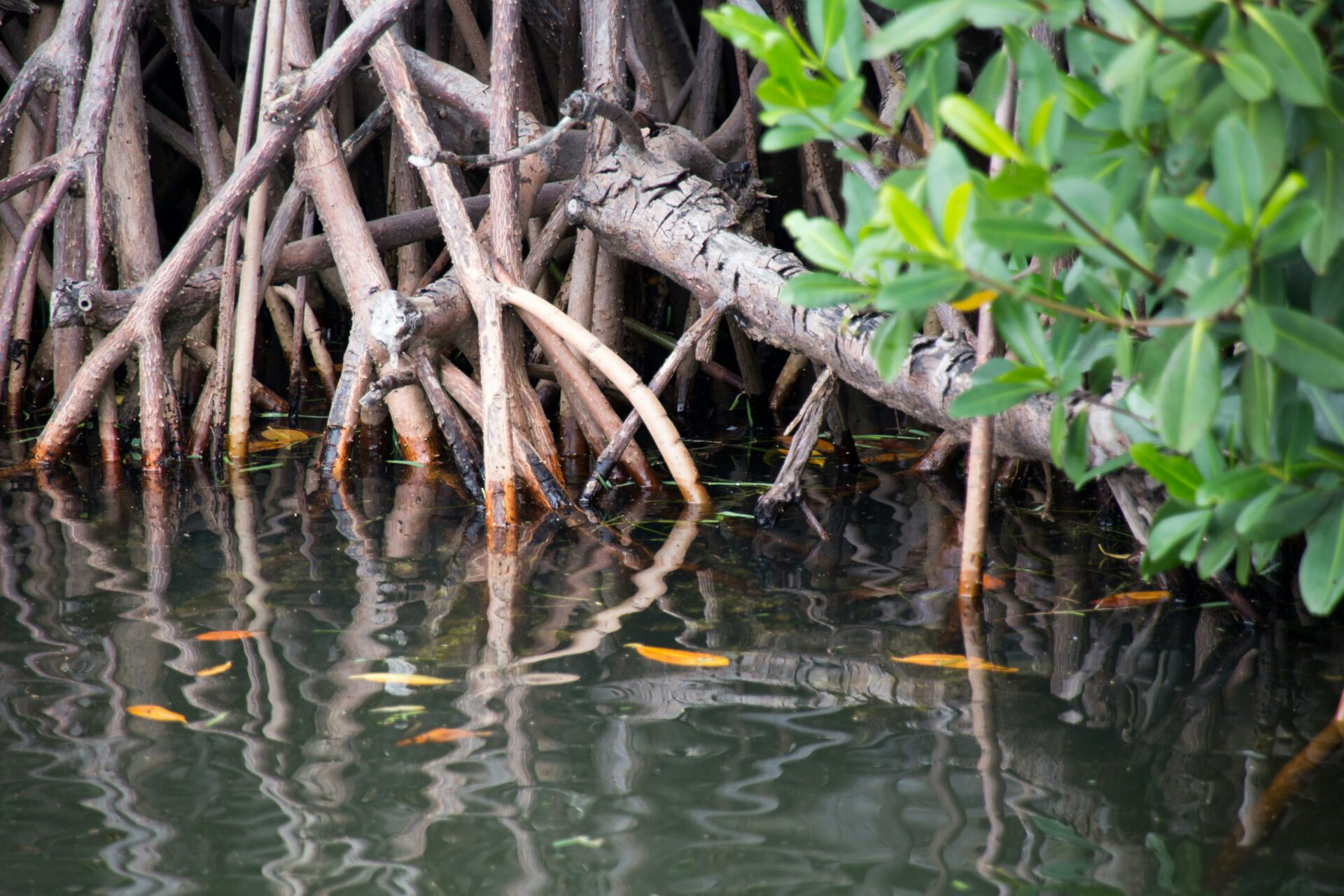
Conservation Efforts and the Future of the Everglades
The Everglades has faced serious threats over the decades. When I visited, park rangers explained how drainage projects and urban development have shrunk this unique landscape to just half its original size.
For more than 50 years, The Nature Conservancy and partners have worked to protect this critical ecosystem. Their efforts have safeguarded over 360,000 acres, including working cattle ranches, longleaf pine savannahs, and seasonal wetlands.
The Comprehensive Everglades Restoration Plan (CERP) represents one of America’s most ambitious environmental restoration projects. This federal-state partnership aims to restore natural water flow while still meeting the region’s water needs.
A key component is the construction of a reservoir to store and treat water before sending it south to Everglades National Park. This will help combat one of the biggest issues I saw—altered water flow that harms the delicate balance of freshwater marshes and mangrove ecosystems.
During my hike on Anhinga Trail, I spotted several non-native plants and animals that threaten native biodiversity.
Invasive species present another major challenge. I saw several non-native plants and animals that threaten native biodiversity.
Climate change and sea level rise pose growing threats to this low-lying region. Salt water intrusion particularly endangers the freshwater marshes that make the Everglades so special.
Despite these challenges, I left feeling hopeful. The preservation of the Everglades isn’t just about saving a beautiful place—it’s about protecting a complex web of ecosystems supporting incredible biodiversity and providing essential services to millions of Floridians.

